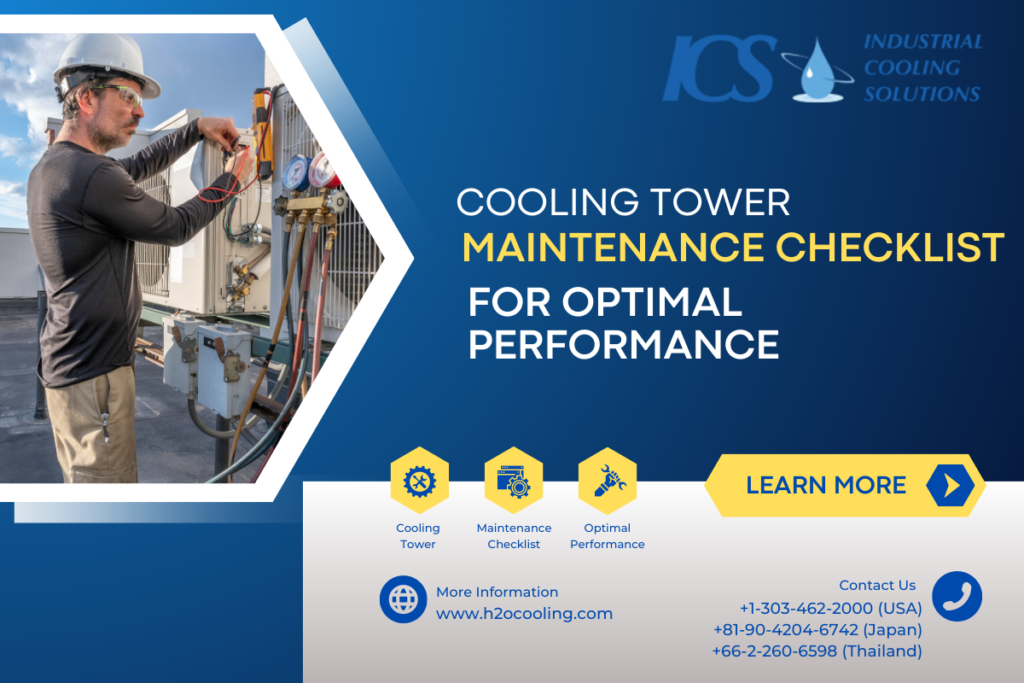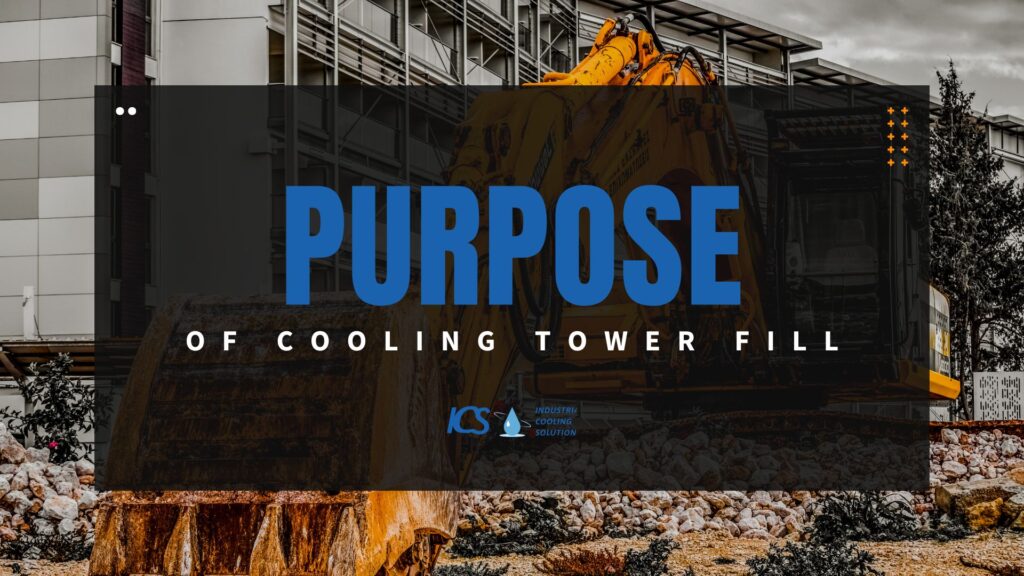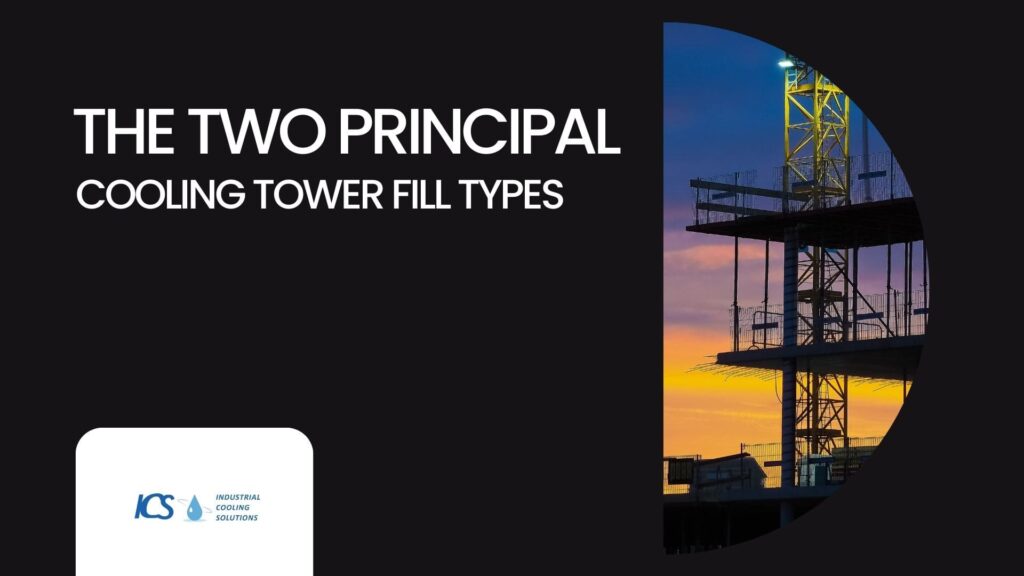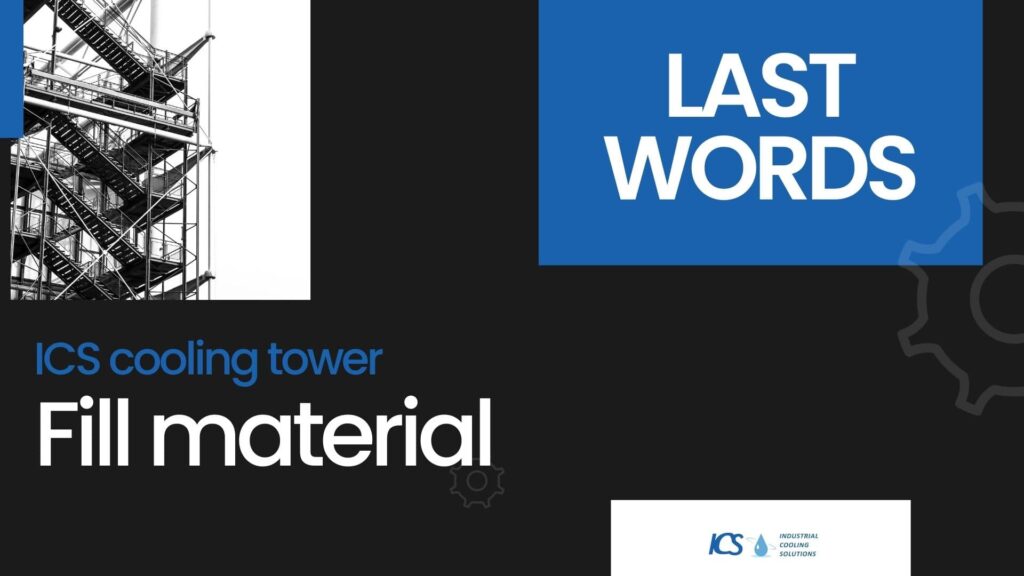Menara pendingin berperan penting dalam menjaga suhu optimal untuk berbagai proses industri, termasuk pembangkit listrik, petrokimia, kimia, proses, dan sistem HVAC. Menara pendingin ini bertanggung jawab membuang panas berlebih ke atmosfer. Seperti sistem mekanis lainnya, menara pendingin memerlukan perawatan rutin untuk memastikan umur panjang dan efisiensinya. Yang penting, mengabaikan pemeliharaan dapat menyebabkan penurunan efisiensi, perbaikan yang mahal, dan potensi bahaya keselamatan. Entri blog ini berisi daftar periksa pemeliharaan menara pendingin langkah demi langkah yang sederhana dan komprehensif yang akan membantu Anda menjaga menara pendingin Anda tetap beroperasi secara efisien dan lancar.
Daftar periksa yang berguna ini akan membantu Anda mendapatkan wawasan berharga dalam memelihara menara pendingin Anda, memaksimalkan kinerjanya, dan memperpanjang masa pakainya. Mari selami dan jelajahi langkah-langkah penting untuk menjaga daftar periksa pemeliharaan menara pendingin Anda guna melihat apakah pemeliharaannya berjalan lancar dan efisien.
Apa itu Menara Pendingin?
Menara pendingin adalah perangkat terbuka berukuran besar yang dirancang untuk mendinginkan air panas proses atau cairan lain dengan mengekstraksi panas dan melepaskannya ke atmosfer. Menara pendingin dapat berupa draft paksa, draft terinduksi, atau draft alami dan dapat ditemukan di pembangkit listrik & industri, kilang, dan bahkan bangunan komersial besar.
Memahami Komponen Utama
Menara pendingin terdiri dari elemen-elemen utama berikut:
1. Sistem Kipas: Bertanggung jawab untuk menciptakan aliran udara yang diperlukan untuk pembuangan panas.
2. Drift Eliminator: Komponen khusus ini mencegah tetesan air terbawa oleh udara buangan.
3. Bahan Isi: Memfasilitasi perpindahan panas dengan memaksimalkan kontak antara udara dan air, sehingga mendorong pendinginan yang efisien.
4. Sistem Distribusi Air: Mendistribusikan air secara merata ke seluruh bahan pengisi untuk memastikan efisiensi pendinginan yang optimal.
5. Bak dan Bak: Bak menampung dan menampung air untuk disirkulasikan kembali, sementara bak menampung drainase yang baik. Daftar Periksa Perawatan Menara Pendingin Langkah-demi-Langkah
6. Perawatan rutin menara pendingin sangat penting untuk pengoperasian yang efisien dan umur panjang. Berikut adalah daftar periksa langkah demi langkah yang dapat membantu menjaga menara pendingin Anda dalam kondisi optimal. Jadi lihat langkah-langkah di bawah ini.
Langkah 1: Periksa Eksterior Menara
Mulailah dengan melakukan inspeksi visual pada bagian luar menara pendingin. Carilah tanda-tanda kerusakan fisik, korosi, atau kebocoran. Periksa integritas struktur, bilah kipas, kisi-kisi, dan pintu akses. Jika Anda menemukan masalah apa pun, buatlah catatan untuk penyelidikan atau perbaikan lebih lanjut. Apakah aliran air merata di seluruh “zona hujan”? Jika tidak, Anda tahu ada kemungkinan nozel rusak, pengisian tersumbat, atau masalah lain yang perlu dikhawatirkan.
Langkah 2: Bersihkan Baskom dan Bah
Menara pendingin merupakan pembersih udara yang sangat efektif sehingga bak dan wadah air dingin menara pendingin rentan terhadap penumpukan puing, sedimen, dan pertumbuhan mikrobiologis. Mulailah dengan mengeringkan dan membersihkan baskom secara menyeluruh. Singkirkan akumulasi kotoran, daun, atau benda asing lainnya. Gunakan biosida atau bahan pembersih yang sesuai untuk menghilangkan bakteri, ganggang, dan jamur yang dapat menyebabkan pengotoran dan penurunan kinerja.
Langkah 3: Periksa Sistem Pengolahan Air
Pengolahan air yang tepat sangat penting untuk mencegah kerak, korosi, dan pertumbuhan biologis dalam sistem menara pendingin. Periksa peralatan pengolahan air, termasuk pengumpan bahan kimia, filter, dan sistem kontrol pH. Pastikan peralatan berfungsi dengan benar, dan sesuaikan laju pemberian dosis bahan kimia sesuai kebutuhan.
Langkah 4: Periksa Drift Eliminator dan Isi Material
Penghilang arus dan material pengisi memainkan peran penting dalam mengoptimalkan efisiensi menara pendingin. Periksa komponen-komponen ini apakah ada penyumbatan, penghalang, atau tanda-tanda keausan. Bersihkan semua kotoran atau kerak dari penghilang penyimpangan dan pastikan bahan pengisi utuh dan distribusikan air secara merata ke setiap sel.
Langkah 5: Periksa Sistem Kipas
Sistem kipas sangat penting untuk aliran udara dan pembuangan panas yang baik. Periksa bilah kipas apakah ada kerusakan atau ketidakseimbangan. Pastikan motor kipas, kopling, dan girboks dalam kondisi baik dan sejajar dengan benar. Lumasi bantalan dan ganti oli gearbox sesuai anjuran pabrikan.
Langkah 6: Periksa Sistem Distribusi Air
Sistem distribusi air memastikan aliran air merata di atas bahan pengisi. Periksa nozel semprotan yang tersumbat atau tidak berfungsi. Sesuaikan atau ganti nozel yang rusak untuk menjaga distribusi air tetap konsisten dan mencegah titik kering yang menyebabkan pendinginan tidak efisien.
Langkah 7: Bersihkan dan Periksa Pipa Air
Periksa sistem perpipaan air apakah ada kebocoran, korosi, atau penyumbatan. Hapus semua kerak atau endapan yang mungkin terakumulasi. Periksa katup, fitting, dan kopling untuk pengoperasian dan kekencangan yang benar. Perbaiki atau ganti komponen yang rusak bila perlu.
Langkah 8: Uji Kualitas Air
Pengujian kualitas air secara teratur sangat penting untuk memantau parameter seperti pH, konduktivitas, dan total padatan terlarut (TDS). Kumpulkan sampel air dan lakukan pengujian menggunakan alat pengujian yang sesuai atau kirimkan ke laboratorium bersertifikat. Selain itu, sesuaikan parameter pengolahan air berdasarkan hasil untuk menjaga kondisi optimal.
Langkah 9: Dokumentasikan dan Jadwalkan Tugas Pemeliharaan
Simpan catatan rinci tentang semua aktivitas pemeliharaan, termasuk inspeksi, perbaikan, dan penyesuaian pengolahan air. Buat jadwal perawatan berdasarkan rekomendasi pabrikan dan pengamatan Anda. Oleh karena itu, tinjau dan perbarui jadwal secara berkala untuk memastikan pemeliharaan tepat waktu dan proaktif.
Daftar Periksa Perawatan Menara Pendingin yang Komprehensif: Dari Pemeriksaan Harian hingga Inspeksi Tahunan
Sehari-hari
• Periksa apakah ada kebocoran, suara bising, atau getaran yang terlihat.
• Periksa ketinggian air dan pastikan berada dalam kisaran yang disarankan.
• Pantau suhu air dan alat pengukur tekanan.
• Periksa pengoperasian kipas dan pastikan pengoperasiannya benar.
• berjalan di sekeliling menara untuk memeriksa keseimbangan di zona hujan.w
Triwulanan
• Melakukan pemeriksaan menyeluruh terhadap bagian luar menara, termasuk integritas struktur, bilah kipas, dan kisi-kisi.
• Periksa dan bersihkan saringan atau penyaring air.
• Periksa dan lumasi bantalan motor kipas dan level & kondisi oli girboks..
• Uji parameter kualitas air seperti pH, konduktivitas, dan TDS.
Tengah tahunan
• Melakukan pemeriksaan menyeluruh terhadap sistem distribusi air, termasuk pipa, katup, dan perlengkapannya.
• Periksa bahan pengisi apakah ada tanda-tanda kerusakan atau pengotoran.
• Verifikasikan sambungan penyelarasan pada sistem kipas.
• Bersihkan atau ganti nosel penyemprot yang tersumbat atau rusak.
Setiap tahun
• Melakukan pemeriksaan menyeluruh terhadap seluruh sistem menara pendingin, termasuk komponen mekanis dan elektrik.
• periksa bilah kipas dari keretakan, keseimbangan dan keselarasan.
• timbang blok pengisi yang dipilih dari tingkat yang lebih rendah & catat bobotnya untuk mengukur pengotoran.
• Periksa dan bersihkan bak air dan bak penampungan air.
• Periksa dan sesuaikan sistem pengolahan air, termasuk pengumpan bahan kimia dan peralatan kontrol.
• Melakukan pembersihan dan pemeriksaan menyeluruh terhadap pipa air dan peralatan terkait.
Mempersiapkan Menara Pendingin untuk Masa Non Operasional
Sebelum mematikan menara pendingin dalam jangka waktu lama, penting untuk melakukan langkah-langkah berikut:
Pembersihan Menyeluruh
Bersihkan seluruh sistem menara pendingin, termasuk bak, bak, bahan pengisi, dan sistem distribusi air. Singkirkan semua puing, sedimen, atau pertumbuhan biologis yang mungkin terakumulasi. Hal ini membantu mencegah korosi, pengotoran, dan perkembangbiakan mikroorganisme berbahaya.
Kuras Sistem
Kuras seluruh sistem menara pendingin untuk menghilangkan semua air. Hal ini meminimalkan risiko genangan air, yang dapat menyebabkan pertumbuhan bakteri, pembentukan kerak, dan korosi. Pastikan sistem kering dan bebas dari kelembapan sebelum melanjutkan.
Periksa dan Perbaiki
Melakukan pemeriksaan menyeluruh terhadap komponen menara pendingin. Perhatikan tanda-tanda kerusakan, seperti retak, bocor, atau komponen yang aus. Atasi dan perbaiki masalah ini sebelum periode idle untuk mencegah kerusakan lebih lanjut.
Pentingnya Pemeliharaan Preventif
Seperti sistem mekanis lainnya, menara pendingin memerlukan perawatan rutin untuk memastikan efisiensi dan umur panjangnya. Berikut ini, kami mengeksplorasi mengapa pemeliharaan preventif sangat penting.
Efisiensi dan Kinerja
Pemeliharaan rutin memastikan menara terus beroperasi pada efisiensi puncak. Seiring waktu, endapan mineral, sedimen, dan pertumbuhan biologis dapat terakumulasi di dalam menara, sehingga menghambat perpindahan panas. Hal ini mengurangi kapasitas pendinginan dan kinerja menara secara keseluruhan. Dengan melakukan inspeksi rutin, pembersihan, dan pemeliharaan preventif, masalah-masalah ini dapat diidentifikasi dan diatasi dengan cepat sehingga menara dapat berfungsi secara optimal.
Mencegah Kerusakan Peralatan
Menara pendingin saling berhubungan dengan mesin yang mahal dan kritis. Mengabaikan pemeliharaan dapat mengakibatkan konsekuensi yang parah, seperti kegagalan peralatan, waktu henti pabrik, dan perbaikan yang mahal. Misalnya, air di menara yang tidak diolah dapat menyebabkan korosi dan pengotoran pada sistem, sehingga menyebabkan kerusakan yang lebih serius pada sistem secara keseluruhan. Perawatan rutin, termasuk pengolahan air dan tindakan pengendalian korosi, membantu menjaga keseluruhan sistem pendingin, memastikan umur panjang dan pengoperasian tanpa gangguan.
Memastikan Kepatuhan Terhadap Peraturan
Banyak negara mempunyai peraturan dan pedoman khusus untuk memastikan pengoperasian menara pendingin yang aman, khususnya terkait kualitas air dan emisi. Pemeliharaan rutin memainkan peran penting dalam memenuhi standar kepatuhan ini. Dengan melakukan inspeksi rutin, memantau kandungan kimia air, dan menerapkan modifikasi yang diperlukan, perusahaan dapat menghindari hukuman, komplikasi hukum, dan dampak negatif terhadap reputasi mereka.
Efisiensi Energi dan Penghematan Biaya
Menara yang dirawat dengan baik mengkonsumsi lebih sedikit energi, sehingga menghasilkan penghematan biaya yang besar bagi industri. Menara yang kotor atau tidak dirawat dengan baik memerlukan lebih banyak daya untuk mencapai efek pendinginan yang diinginkan, sehingga meningkatkan konsumsi energi dan tagihan utilitas. Perawatan rutin, termasuk pembersihan permukaan pertukaran panas dan mengoptimalkan pengolahan air, membantu mempertahankan perpindahan panas yang efisien, mengurangi penggunaan energi, dan menurunkan biaya operasional.
Masalah Kesehatan dan Lingkungan
Menara pendingin yang terabaikan dapat berubah menjadi tempat berkembang biak yang ideal bagi bakteri berbahaya, termasuk Legionella yang terkenal kejam, sehingga membahayakan kesehatan manusia. Namun, menerapkan praktik pemeliharaan rutin, seperti disinfeksi rutin dan pemantauan kualitas air, dapat secara efektif mencegah atau mengendalikan pertumbuhan bakteri dan mikroorganisme lainnya. Dengan memprioritaskan langkah-langkah pemeliharaan ini, lingkungan kerja yang aman tidak hanya dapat dipastikan bagi karyawan tetapi juga ekosistem di sekitarnya dapat terlindungi dari potensi kontaminasi.
Dalam lingkungan industri atau komersial apa pun, menara pendingin memainkan peran penting dalam mengatur suhu dan menjaga efisiensi peralatan. Namun, struktur ini secara tidak sengaja dapat menjadi surga bagi bakteri berbahaya jika diabaikan. Salah satu bakteri yang paling mengkhawatirkan adalah Legionella, yang dapat menyebabkan penyakit pernapasan parah jika terhirup.
Untuk mengatasi masalah ini, pemeliharaan rutin adalah hal yang terpenting. Dengan menerapkan protokol disinfeksi secara rutin dan memantau kualitas air dengan cermat, pertumbuhan dan perkembangbiakan bakteri dan mikroorganisme lainnya dapat dikelola secara proaktif. Pendekatan pencegahan ini secara signifikan mengurangi risiko infeksi dan menjaga kesejahteraan karyawan dan siapa pun yang terpapar lingkungan menara pendingin.
Oleh karena itu, pemeliharaan menara pendingin bukan sekadar tugas opsional; ini adalah aspek penting untuk memastikan efisiensi operasional, melindungi peralatan, mematuhi peraturan, dan menjaga lingkungan.
Kesimpulan
Mengikuti daftar periksa pemeliharaan menara pendingin selangkah demi selangkah akan membantu Anda menjaga menara pendingin Anda dalam kondisi optimal, memastikan pembuangan panas yang efisien dan mencegah kerusakan yang merugikan. Inspeksi, pembersihan, dan penyesuaian rutin akan memperpanjang masa pakai menara pendingin Anda, menghemat energi, dan menjaga keandalan proses industri Anda. Dengan menginvestasikan waktu dan tenaga dalam pemeliharaan menara pendingin yang tepat, Anda akan menikmati manfaat jangka panjang dalam hal kinerja, penghematan biaya, dan pengoperasian tanpa gangguan.
Upaya pemeliharaan rutin, berapa pun frekuensinya, akan membantu Anda memperpanjang umur menara pendingin, mengoptimalkan konsumsi energi, mencegah kerusakan, dan memastikan pembuangan panas yang efisien. Berinvestasilah dalam pemeliharaan menara pendingin yang tepat untuk menikmati manfaat penghematan biaya, peningkatan kinerja sistem, dan pengoperasian tanpa gangguan.
Jaga Menara Pendingin Anda dalam Kondisi Terbaik: Bermitralah dengan Profesional ICS Sekarang
Memelihara menara pendingin Anda sangat penting untuk kinerja optimalnya, dan para ahli di ICS siap membantu. Para profesional terampil kami diperlengkapi dengan baik untuk menangani semua aspek pemeliharaan menara pendingin. Dari pemeriksaan rutin hingga pembersihan menyeluruh dan perbaikan yang diperlukan, kami siap membantu Anda.
Percayakan kepada kami untuk menjaga menara pendingin Anda tetap beroperasi secara efisien, memastikan lingkungan yang nyaman dan aman. Hubungi ICS hari ini dan biarkan tim ahli kami membantu Anda menjaga kinerja puncak menara pendingin Anda.
FAQ Tentang Perawatan Menara Pendingin
Seberapa sering perawatan menara pendingin harus dilakukan?
Frekuensi pemeliharaan menara pendingin bergantung pada banyak faktor, termasuk jenis menara pendingin, umurnya, intensitas penggunaan, dan kondisi lingkungan. Secara umum, menara pendingin harus menjalani perawatan rutin minimal dua kali setahun. Namun, di lokasi dengan iklim yang lebih keras atau tingkat kontaminasi yang lebih tinggi, pemeliharaan yang lebih sering mungkin diperlukan. Inspeksi dan pemantauan rutin akan menentukan jadwal perawatan spesifik yang diperlukan untuk setiap menara pendingin.
Apa saja tugas umum yang termasuk dalam daftar periksa pemeliharaan menara pendingin?
Daftar periksa pemeliharaan menara pendingin umumnya mencakup tugas-tugas seperti pembersihan dan disinfeksi pengisian menara, penghilang penyimpangan, dan bak; inspeksi dan pelumasan komponen mekanis seperti kipas, motor, dan girboks; menguji dan menyesuaikan parameter kimia air; dan memeriksa elemen struktur untuk mencari tanda-tanda korosi atau kerusakan. Hal ini juga mungkin melibatkan peninjauan data operasional, verifikasi pengaturan kontrol, dan melakukan evaluasi kinerja termal.






